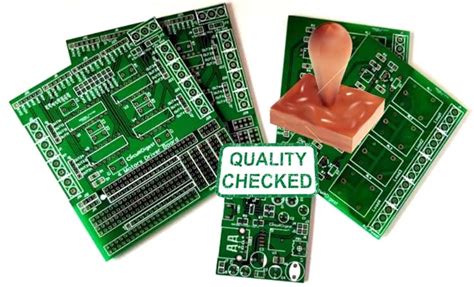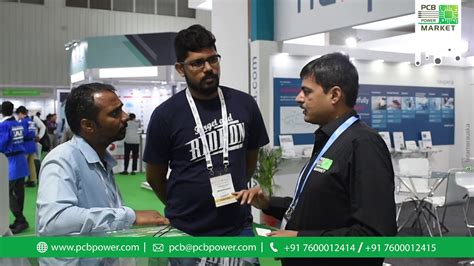The Importance of Proper Component Selection in Military PCBs
Military PCBs are used in a wide range of applications, from communications systems and avionics to weapon systems and surveillance equipment. These applications often require the PCBs to operate in demanding environments, such as:
- Extreme temperatures (high and low)
- High humidity
- Shock and vibration
- Exposure to dust, sand, and other contaminants
- Electromagnetic interference (EMI)
To ensure that military PCBs can withstand these conditions and perform reliably, it is essential to select components that meet or exceed the required specifications. Failure to do so can lead to system malfunctions, reduced lifespan, and even catastrophic failures that can compromise the safety of personnel and the success of missions.
Military Standards and Certifications for PCB Components
When sourcing components for military PCBs, designers must adhere to various military standards and certifications that govern the quality, reliability, and performance of these components. Some of the most common standards include:
- MIL-STD-810: Environmental Engineering Considerations and Laboratory Tests
- MIL-STD-202: Test Methods for Electronic and Electrical Component Parts
- MIL-PRF-38534: Performance Specification for Hybrid Microcircuits
- MIL-PRF-38535: Performance Specification for Integrated Circuits (Microcircuits) Manufacturing
- MIL-PRF-19500: Performance Specification for Semiconductor Devices
These standards outline the requirements for testing, screening, and qualification of components to ensure they can withstand the rigors of military applications. When sourcing components, designers should look for parts that are compliant with the relevant military standards and have been tested and certified accordingly.

Key Considerations for Sourcing Military PCB Components
Component Availability and Lead Times
One of the primary challenges in sourcing military PCB components is the limited availability and long lead times associated with many specialized parts. Military-grade components are often produced in smaller quantities compared to commercial components, and they may require additional testing and certification, which can extend lead times.
To mitigate this issue, designers should:
- Plan ahead and allow sufficient time for component procurement
- Identify multiple sources for critical components to reduce the risk of supply chain disruptions
- Consider using cross-references or alternative parts that meet the same specifications
- Engage with suppliers early in the design process to ensure availability and secure allocation of components
Counterfeit Prevention
Counterfeit components pose a significant risk to the reliability and performance of military PCBs. These components may not meet the required specifications, and they can introduce vulnerabilities and failure points in the system. To prevent the use of counterfeit components, designers should:
- Source components from authorized distributors and manufacturers
- Implement a robust counterfeit detection and avoidance program
- Use authentication tools, such as DNA marking, to verify the authenticity of components
- Maintain traceability throughout the supply chain to ensure the provenance of components
Obsolescence management
Military systems often have extended lifecycles, which can span several decades. During this time, components may become obsolete as manufacturers discontinue production or transition to newer technologies. Obsolescence can pose a significant challenge for military PCB designers, as it may require redesigns, requalification, and recertification of the system.
To manage obsolescence effectively, designers should:
- Conduct regular obsolescence risk assessments to identify components that are at risk of becoming obsolete
- Develop obsolescence management plans that outline strategies for mitigating the impact of obsolescence, such as lifetime buys, last-time buys, or redesigns
- Engage with suppliers and manufacturers to stay informed about product roadmaps and end-of-life notices
- Consider using components with longer product lifecycles or those that are specifically designed for military applications

Unified PCB Sourcing in a Collaborative Design Environment
Benefits of a Unified Design Environment
A unified design environment that integrates PCB design, component selection, and supply chain management can greatly streamline the process of sourcing military PCB components. By bringing together all the relevant information and tools in a single platform, designers can:
- Access real-time component data, including availability, pricing, and lead times
- Collaborate with suppliers and manufacturers to ensure the availability and suitability of components
- Perform automated checks for component compliance with military standards and certifications
- Manage obsolescence risks and develop mitigation strategies
- Maintain traceability throughout the design and procurement process
Key Features of a Unified PCB Sourcing Platform
A comprehensive unified PCB sourcing platform should include the following features:
- Integration with major PCB design tools, such as Altium Designer, Cadence OrCAD, and Mentor Graphics PADS
- Extensive component libraries with detailed specifications, datasheets, and compliance information
- Real-time supply chain data, including availability, pricing, and lead times from multiple distributors and manufacturers
- Automated compliance checking against military standards and certifications
- Obsolescence management tools, including risk assessment, lifecycle analysis, and alternative part identification
- Collaboration tools for sharing design information and communicating with suppliers and stakeholders
By leveraging these features, designers can streamline the process of sourcing military PCB components, reduce the risk of errors and delays, and ensure the overall quality and reliability of the final product.
Best Practices for Unified PCB Sourcing
To maximize the benefits of a unified PCB sourcing platform, designers should follow these best practices:
- Start the component selection process early in the design cycle to allow sufficient time for procurement and testing
- Engage with suppliers and manufacturers to validate component selections and ensure availability
- Use automated compliance checking to identify components that meet the required military standards and certifications
- Regularly monitor the supply chain for potential disruptions or obsolescence risks
- Maintain accurate and up-to-date component information in the design files to facilitate collaboration and traceability
- Establish a robust counterfeit detection and avoidance program to minimize the risk of using substandard or fraudulent components
- Develop and maintain obsolescence management plans to ensure the long-term supportability of the system
By adhering to these best practices, designers can optimize their use of a unified PCB sourcing platform and ensure the successful design and manufacture of military PCBs.

Case Study: Implementing a Unified PCB Sourcing Platform
To illustrate the benefits of a unified PCB sourcing platform, let’s consider a case study of a defense contractor designing a new avionics system for a military aircraft.
The Challenge
The avionics system required a complex PCB with over 500 components, many of which were specialized military-grade parts with limited availability and long lead times. The design team faced challenges in:
- Identifying components that met the required military standards and certifications
- Ensuring the availability of components and managing long lead times
- Collaborating with suppliers and manufacturers to validate component selections
- Managing obsolescence risks and developing mitigation strategies
The Solution
To address these challenges, the defense contractor implemented a unified PCB sourcing platform that integrated with their existing PCB design tools. The platform provided:
- Extensive component libraries with detailed specifications and compliance information
- Real-time supply chain data from multiple distributors and manufacturers
- Automated compliance checking against military standards and certifications
- Obsolescence management tools, including risk assessment and alternative part identification
- Collaboration tools for sharing design information and communicating with suppliers
The Results
By leveraging the unified PCB sourcing platform, the design team was able to:
- Identify and select components that met the required military standards and certifications, reducing the risk of non-compliance and rework
- Collaborate with suppliers and manufacturers to validate component selections and ensure availability, reducing lead times and minimizing supply chain disruptions
- Identify and mitigate obsolescence risks early in the design process, ensuring the long-term supportability of the avionics system
- Streamline the design and procurement process, reducing the overall development time and cost
The avionics system was successfully designed, manufactured, and deployed, meeting all the required performance and reliability standards. The unified PCB sourcing platform played a critical role in the success of the project, demonstrating the value of a collaborative and integrated approach to military PCB design.
Frequently Asked Questions (FAQ)
1. What are the main differences between military and commercial PCB components?
Military PCB components are designed to meet more stringent requirements for reliability, durability, and performance in harsh environments compared to commercial components. They are often subject to additional testing, screening, and certification to ensure compliance with military standards.
2. How can I ensure that the components I source are authentic and not counterfeit?
To minimize the risk of counterfeit components, source parts from authorized distributors and manufacturers, implement a robust counterfeit detection and avoidance program, use authentication tools such as DNA marking, and maintain traceability throughout the supply chain.
3. What should I do if a critical component becomes obsolete during the design process?
If a critical component becomes obsolete, you should develop an obsolescence management plan that outlines strategies for mitigating the impact, such as lifetime buys, last-time buys, or redesigns. Engage with suppliers and manufacturers to identify alternative parts that meet the same specifications and ensure their availability.
4. How can a unified PCB sourcing platform help me manage compliance with military standards and certifications?
A unified PCB sourcing platform can provide automated compliance checking against military standards and certifications, helping you identify components that meet the required specifications. The platform can also provide access to detailed component data, including datasheets and compliance information, streamlining the process of verifying compliance.
5. What are the key benefits of using a unified PCB sourcing platform for military PCB design?
The key benefits of using a unified PCB sourcing platform for military PCB design include:
- Access to real-time component data, including availability, pricing, and lead times
- Collaboration with suppliers and manufacturers to ensure the availability and suitability of components
- Automated compliance checking against military standards and certifications
- Obsolescence management tools to mitigate the risk of component discontinuation
- Streamlined design and procurement processes, reducing overall development time and cost
By leveraging these benefits, military PCB designers can overcome the unique challenges associated with sourcing components for high-reliability applications and ensure the successful design and manufacture of robust, high-performance systems.
Conclusion
Sourcing military PCB components in a unified design environment is a complex process that requires careful consideration of various factors, including component availability, compliance with military standards, counterfeit prevention, and obsolescence management. By leveraging a unified PCB sourcing platform that integrates design, component selection, and supply chain management, designers can streamline the process, reduce the risk of errors and delays, and ensure the overall quality and reliability of the final product.
Implementing best practices, such as early component selection, engagement with suppliers, automated compliance checking, and robust obsolescence management, can further optimize the use of a unified PCB sourcing platform and contribute to the success of military PCB design projects.
As the demand for high-reliability military electronics continues to grow, the adoption of unified PCB sourcing platforms and collaborative design environments will become increasingly important for defense contractors and military system integrators. By embracing these tools and best practices, the industry can overcome the challenges associated with sourcing military PCB components and deliver innovative, robust, and reliable systems that meet the evolving needs of modern military applications.
| Component Type | Key Considerations | Military Standards |
|---|---|---|
| Capacitors | – Temperature stability – Voltage ratings – Packaging (surface mount or through-hole) |
– MIL-PRF-123 – MIL-PRF-49470 – MIL-PRF-55681 |
| Resistors | – Temperature coefficient – Power ratings – Tolerance |
– MIL-PRF-55342 – MIL-PRF-32159 – MIL-PRF-49465 |
| Inductors | – Current ratings – Saturation current – Q factor |
– MIL-PRF-27 – MIL-PRF-15305 – MIL-PRF-83446 |
| Connectors | – Contact resistance – Mating cycles – Environmental sealing |
– MIL-DTL-38999 – MIL-DTL-55302 – MIL-DTL-83513 |
| Semiconductors | – Junction temperature – Packaging (hermetic or non-hermetic) – Radiation hardness |
– MIL-PRF-19500 – MIL-PRF-38534 – MIL-PRF-38535 |
Table 1: Key considerations and military standards for common PCB component types

No responses yet